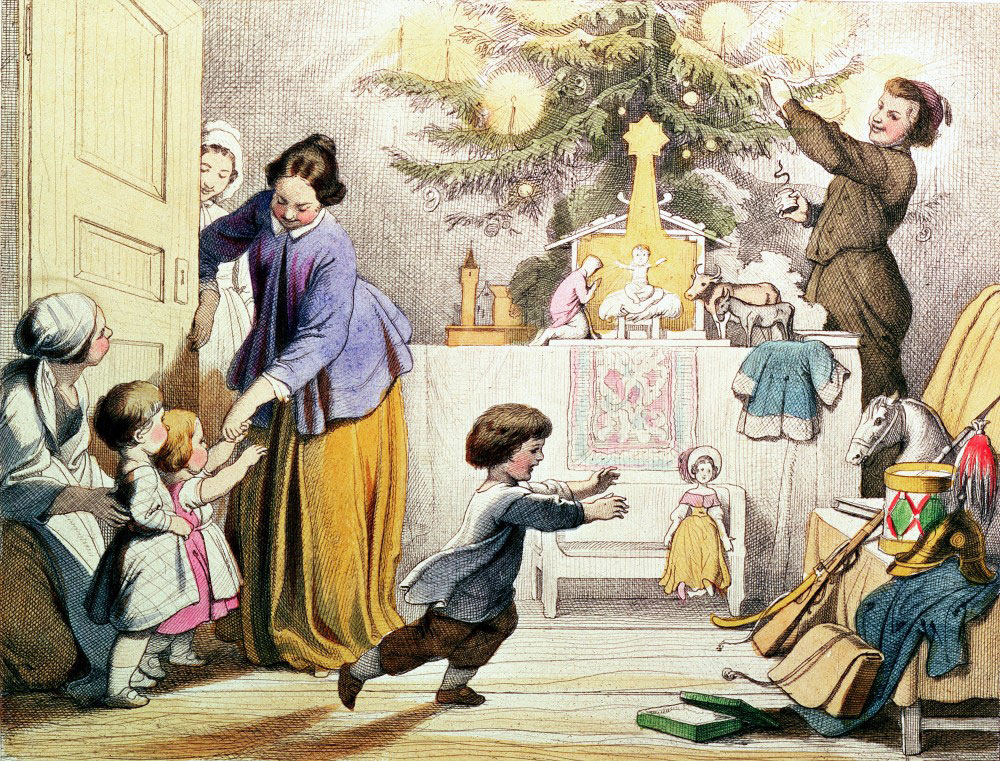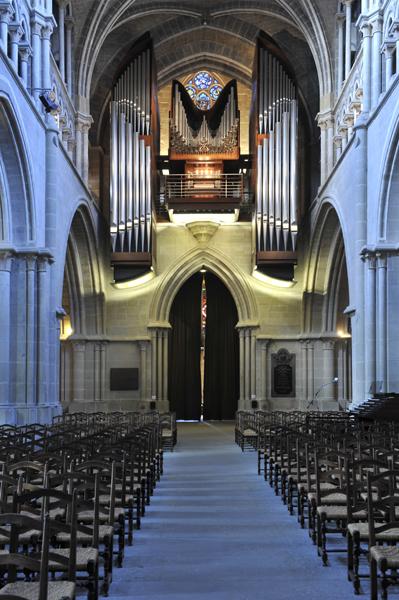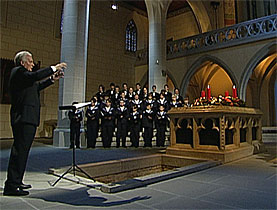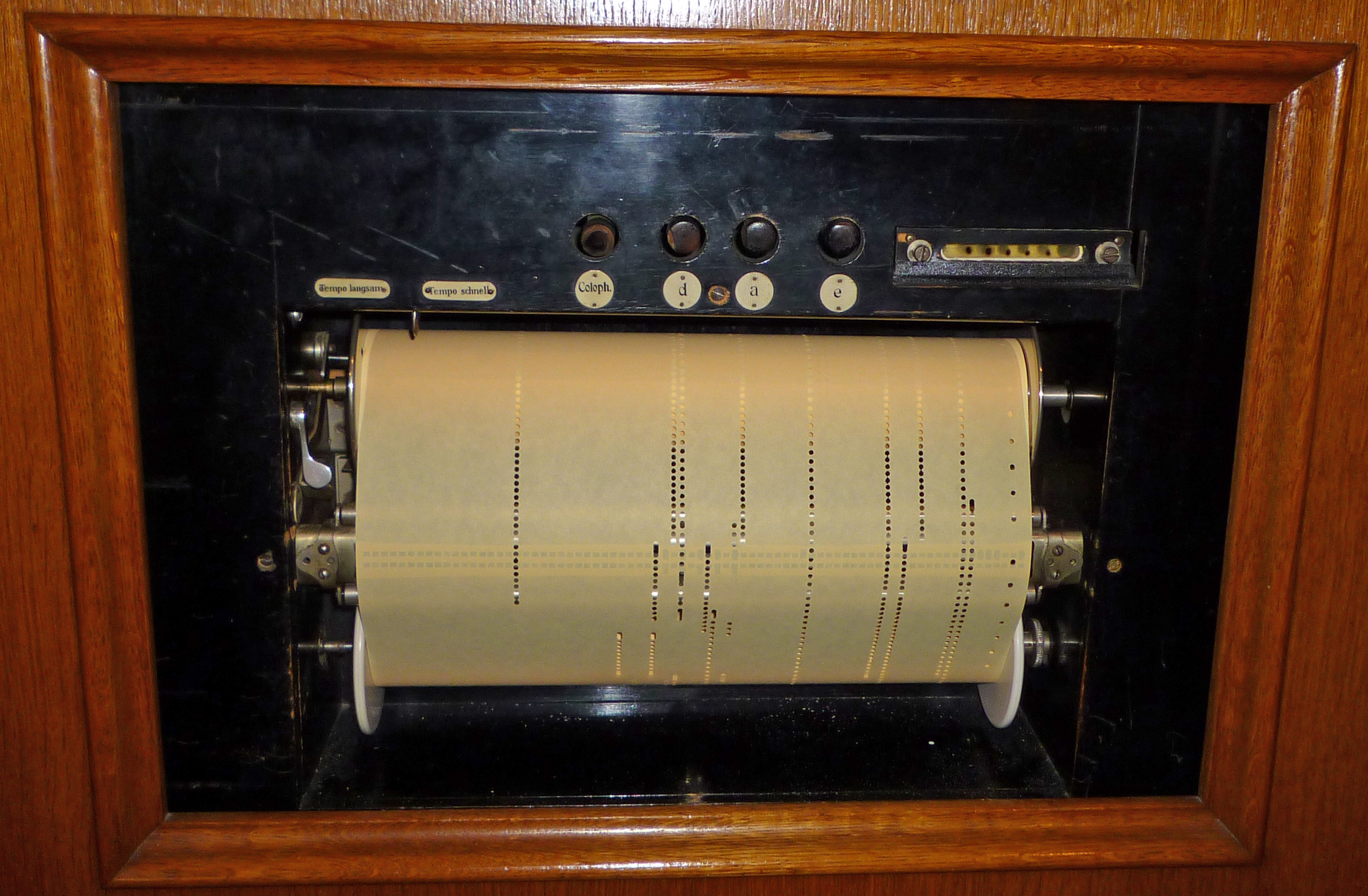The sounds of Christmas of yesteryear

Sitting in a restaurant on a snowy winter’s day a century ago, you might well have enjoyed a meal to the sounds of Christmas music played on an orchestrion.
Before radio and gramophones appeared, automatic musical instruments such as orchestrions, which simulated the sound of a small orchestra, were very popular. The wealthy could afford their own private entertainment, such as Swiss musical boxes.
Oberhofen, a village on Lake Thun, is home to a collection of around 300 automatic musical instruments, which belong to Kurt and Ursula Matter.
Entering the room which houses the instruments is like stepping back into an era of dance halls, grand hotels and private salons.
In one corner stands a German-made Helios orchestrion, looking like a huge and very grand wooden cabinet. Kurt Matter opens a draw in the middle and places inside a perforated paper roll.
He starts the machine, and the sounds of O Du Fröhliche (O How Joyfully), a German Christmas carol, fill the room.
Music for all
“These instruments were installed originally in public areas, in restaurants, hotels and ocean steamers and they were there for entertainment or dancing,” André Scheurer, a music expert and close friend of the Matters, told swissinfo.ch.
“Normally they played ragtime, Charleston or the famous opera music of the time, but by Christmas the owners changed the repertoire, so you could hear Christmas music in public areas.”
Indeed this is not unlike the piped music that we might hear today in restaurants or out shopping.
This orchestrion, dating from around 1907, was made by the famous manufacturers Hupfeld of Leipzig and originally stood in a dance hall in Prague.
“Kurt Matter found it when it was almost destroyed as the people there didn’t know what to do with this huge orchestrion. He saved it at the last minute,” said Scheurer of the now-restored automaton.
Violin conundrum
From the mid 19th century to the late 1920s, automatic musical instruments were highly popular, being a way to gain access to music outside the concert hall.
Over the years they became increasingly sophisticated. Many attempts were made to emulate the sound of violins, for example, but only a couple of machines actually managed to play the real instruments, including Hupfeld’s Phonoliszt-Violina.
Matter has one of these extremely rare instruments in his collection. The lower part of the cabinet is made up of a piano. On top are three violins, in a ring, placed top down. A moveable bow of horsehair is mounted in a circular frame around them.
“This bow touches the strings and the violins play themselves,” said Scheurer to the strains of Mozart’s Magic Flute. The effect is quite magical and it is easy to see why the violin player caused a sensation in its day.
Street music was often provided by barrel organs, which were cranked by hand – an act that needs strong arm muscles as swissinfo.ch can personally attest. Matter has around 200 examples in his collection, each one unique.
Classical at home
Musical machines were also enjoyed privately. “The music played in homes was more concert and classical music,” Scheurer explained.
These instruments were designed for a wealthier clientele. Much prized were Welte-Mignon player pianos, self-playing pianos. Famous owners included Sir Winston Churchill.
“Mr Welte found a system where he could record a pianist. This went onto a paper roll. When put into the piano, it sounds like the pianist playing 100 years ago,” said the music expert.
This gives a ghostly effect, with the keys going down with each note. Many famous pianists of the day recorded for the Welte-Mignon, of which Matter has an example.
“You can feel the pianistic touch of the music and it’s really marvellous. Not many are left. Originally around 1,000 were built but now only around 200-300 survive,” Scheurer added.
Swiss expertise
Also popular were musical boxes, which were invented by the Swiss. These small and beautifully-made machines, which had their heyday at the end of the 19th century, drew on the expertise gained through watchmaking.
“They were exported around the world and the most beautiful Swiss musical boxes were in the palaces of the sultans, the maharajahs in India, kings and queens and the nobility,” Scheurer said.
Progress drove their decline. “It’s like today when iPhones replace conventional mobile phones. Phonographs and gramophones came in. With gramophones you can buy records and you have a big repertoire of music, with musical boxes you had five or six melodies on one cylinder.”
“The gramophones and the phonographs were very cheap and in a very short time, the whole music box industry was destroyed.”
We hear music from a lovely example from Sainte-Croix in the Jura, where the Swiss industry was focused. At its peak the region had at least a dozen companies making the boxes, Scheurer says. Later some moved on to specialise in the newer technologies.
Lost world
Some boxes were made with the Yuletide in mind. “For example there was the Christmas tree holder. You could put your tree in the holder and it begins to turn around and the musical box plays a Christmas melody,” Scheurer said.
And there is one in the collection, which still works, playing such favourites as Silent Night, although it is a bit too delicate to host a tree.
Matter has spent many years gathering and restoring these musical rarities. Scheurer also has his own collection, albeit smaller. For him, these instruments have a special appeal.
“I can feel how people listened to music 100 years ago, for example on the Welte-Mignon, I can hear how a pupil of the musician and composer Franz Liszt played Liszt’s music.”
“With the orchestrions I can see, hear and feel how people danced during this time and what music they enjoyed – for me it’s a bridge to a time which doesn’t exist anymore.”
Isobel Leybold-Johnson in Oberhofen, swissinfo.ch
The Matter collection is to be found in the Osthaus in Wichterheergut in Oberhofen on picturesque Lake Thun.
Kurt Matter has collected around 300 instruments in around 30 years and restored them. The collection has been given to a foundation carrying his name and is open to the public.
Every month there are concerts at the collection. André Scheurer is often on hand to explain the instruments.

In compliance with the JTI standards
More: SWI swissinfo.ch certified by the Journalism Trust Initiative





You can find an overview of ongoing debates with our journalists here. Please join us!
If you want to start a conversation about a topic raised in this article or want to report factual errors, email us at english@swissinfo.ch.